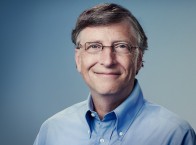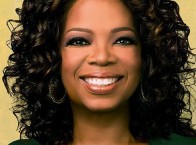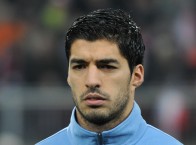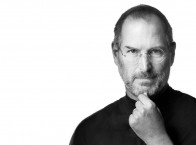From a son of Diwan in rural Indian village to a barrister in South Africa, this short statured practitioner of nonviolence in his entire life was a key architect in the Indian Independence. Here are some interesting facts about him:
- Widely known as “Father of the Nation,” the title was not officially accorded by Government of India. It dates back to July 6, 1944, when Netaji Subhash Chandra Bose addressed him as “Father of the Nation,” in radio and everyone started using it.
- A 10-year old girl pleaded with the government to officially declare Gandhi as “Father of the Nation.” They declined it as Government of India permits only educational and military titles.
- Born as Mohandas Karamchand Gandhi on October 2, 1869 in Porbandar, now in Gujarat, to Karamchand Uttamchand Gandhi and Putlibai.
- In his honor, his date of birth October 2 is celebrated as Gandhi Jayanthi, a national holiday in India.
- October 2, was also declared as the “International Day of Nonviolence” by the United Nations General Assembly in 2007.
- The title “Mahatma” in Sanskrit meaning “High-souled” was first accorded to him in South Africa which is widely used now. He is also known as “Bapu” in India.
- Known for his leadership roles in the Indian Independence movement during the British rule in India, he used non-violence method successfully towards India’s Independence in 1947.
- In the year 1930, Time Magazine had named Gandhi as “Man of the Year.” They again named him among the “Top 25 Political Icons of All-Time,” in 2011.
- In 1999, he was the runner up to the “Person of the Century” Award with Albert Einstein being the winner.
- In the honor of his non-violence teachings, the Government of India awards “Gandhi Peace Prize,” annually to distinguished social workers. Nelson Mandela was the non-Indian recipient.
- Gandhi was nominated 5 times for the Nobel Peace Prize from 1937 to 1948 but never received any. It was decided to be awarded to him on the 5th occasion, but he was assassinated before that.
- In 2006, the Secretary of Norwegian Nobel Committee, Geir Lundestad said “The greatest omission in our 106 year history is undoubtedly that Mahatma Gandhi never received the Nobel Peace Prize.
- He had stated in his autobiography that even though he valued the title “Mahatma” accorded to him, it often pained him.
- In 1969, Soviet Union had issued a stamp of Mahatma Gandhi in his honor.
- Martin Luther King was deeply influenced by Gandhi and said “Christ gave us the goals and Mahatma Gandhi the tactics.” He also sometimes referred to Gandhi as little brown saint.
- Nelson Mandela was also inspired by Gandhian principles that he used it to good effect during the apartheid and successfully end the white rule. It is stated that Mandela completed what Gandhi started.
- Einstein and Gandhi exchanged letters in 1931 and he referred to Gandhi as role model for the generations to come.
- Lanza del Vasto was inspired by Gandhi and went to India in 1936 to learn more from him. He later found the “Community of the Ark” in 1948 based on Gandhi’s ashrams and spread his teachings in Europe.
- His sister Raliat described him as restless as Mercury in his childhood. Either playing or roaming about. She also stated that his favorite pastime was twisting the dogs ear.
- He was deeply influenced by his mother whom he described as a pious lady. About her, he said “she would not think of taking her meals without her daily prayers. She would take the hardest vows and keep them, without flinching. To keep two or three consecutive fasts was nothing to her.”
- He was an average student in his schooldays in Rajkot in 1879. One of the reports rated him as “Good at English, Fair in Arithmetic, Weak in Geography, Conduct Very good and Bad Handwriting.”
- The year 1885 was marred by a double tragedy in his life. His father died on a night when he went to visit his pregnant wife. They had a child just few days later which aslso did not survive for long.
- He had an arranged child marriage in May 1883. 13-year old Gandhi married 14-year old Kasturbai Makhanji Kapadia, known later as Kasturba. She was also affectionately called as “Ba.”
- He joined Samaldas College in Bhavnagar in January 1888 and completed only one term. He suffered severe headaches and homesickness and abandoned his studies. It was the only degree granting institution of higher education in the region at that time.
- During his days in London, he joined the Vegetarian Society, with influence from Henry Salt’s writing. He was even elected to its executive committee.
- His interest in religious thoughts was invoked by his friends in the Vegetarian Society, who were also part of Theosophical Society. They were devoted to study Buddhist and Hindu literature and urged him to join them in reading Bhagavad Gita.
- He was thrown off a train in Pietermaritzburg, South Africa, for his refusal to move off of first class. He protested over it and was allowed the next day.
- In another incident he was beaten by a stage coach driver for not providing enough room for a European passenger.
- He was also ordered to remove his turban by a Magistrate in Durban court, which he promptly refused.
- He unsuccessfully protested against a bill in South Africa that would deny Indians the right to vote. However his campaign was successful in gaining attention towards the plight of Indians in South Africa.
- He was attacked by a white mob when he landed in Durban in 1897. He was rescued by the efforts of the wife of a superintendent.
- His philosophy of Satyagraha or nonviolence protest was put to use for the first time on September 11, in Johannesburg when mass of people of Indian and Chinese population protested against the new act compelling their registration.
- When he went to South Africa for the first time, he was only 24 years old and was unaware of the complexities and situation around the world. When he returned from South Africa in 1915, he was proficient at public speaking negotiations, self promotions and fund raising.
- He along with 37 other Indians received Boer War Medal for their contribution in the war stretcher-bearers. They had to carry wounded soldiers for miles to hospitals where ambulances can’t travel.
- He also established a community called “Tolstoy Farm,” near Johannesburg in 1910, which spread awareness about the policy of peaceful resistance.
- He protested along with the peasants of the Champaran village against the British Landlords. The peasants were forced to grow Indigo crop that was losing demand and low price. He won concessions for them in 1918.
- In Kheda village, he along with Vallabhbhai Patel protested against the collection of taxes when the place was hit by flood and famine. After 5 months of struggle the administration conceded.
- In the 1920, he introduced the non-cooperation movement along with the nonviolence to get India a complete independence. He believed that British rule in India was established with co-operations from Indians and without their cooperation it would collapse.
- He launched a campaign against tax on Salt. The famous Salt march or Dandi March took place from March 12 to April 6, 1930, when he marched 388 kilometers from Ahmedabad to Dandi along with crores of followers.
- Winston Churchill, a consecutive politician, who was out of office at that time strongly opposed Gandhi saying “It is alarming and also nauseating to see Mr Gandhi, a seditious Middle Temple lawyer, now posing as a fakir of a type well known in the East, striding half-naked up the steps of the Vice-regal palace....to parley on equal terms with the representative of the King-Emperor.”
- Gandhi who opposed the concept of partition of India between Hindu and Muslim, as it was against his vision of religious unity visited the place of riot and stopped massacres. However the partition took place with more than 12 million Hindus, Muslims and Sikhs killed on the eve of Independence.
- He was assassinated by Nathuram Godse on January 30, 1948 at the garden of Birla House. Godse shot 3 bullets from a Beretta 9 mm pistol into his chest at point-blank range.
- On his memorial in Raj Ghat, New Delhi, the words “He Ram” is inscribed. This is believed to be his last words when he was fatally shot.
- Two Indian temples – one in Sambalpur, Orissa and another in Chikmangalur, Karnataka are dedicated to Gandhi.
- A Gandhi memorial in Kanyakumari, which resembles any Hindu Temple in India, was constructed in his honor in 1956. One of the urns containing his ashes was kept for display there.
- A feature film on him titled “Gandhi” played by Ben Kingsley and directed by Richard Attenborough won Best Picture Academy Award in 1982.
- In 1968, a 5-hour long biographical documentary film on Gandhi titled “Mahatma: Life of Gandhi – 1869–1948” was release by Vithalbhai Jhaveri.
- In 2007 “Gandhi, My Father,” was released which was based on the relationship between him and his son Harilal Gandhi. It was an Anti-Gandhi themed movie.
- In 2014, a movie titled “Welcome back Gandhi” revolved around the concept of him returning to India after 60 years and dealing with the problems.
- In 2010 the book “Great Soul: Mahatma Gandhi and His Struggle with India” by Joseph Lelyveld crated a lot of furor in India. It contained controversial materials relating to Gandhi’s sexual life.

 Share on Facebook
Share on Facebook





















